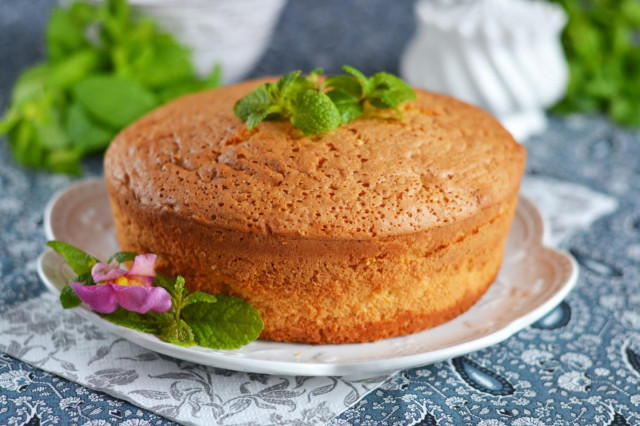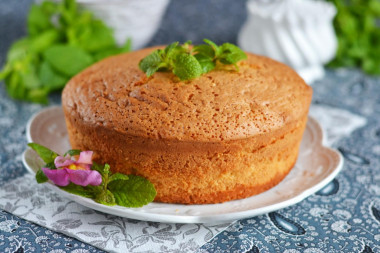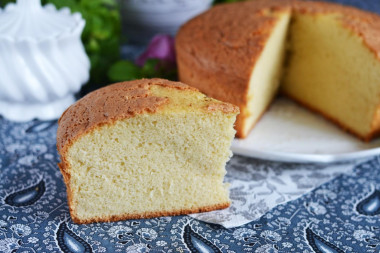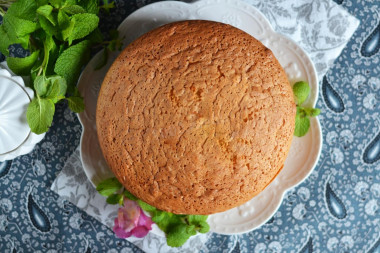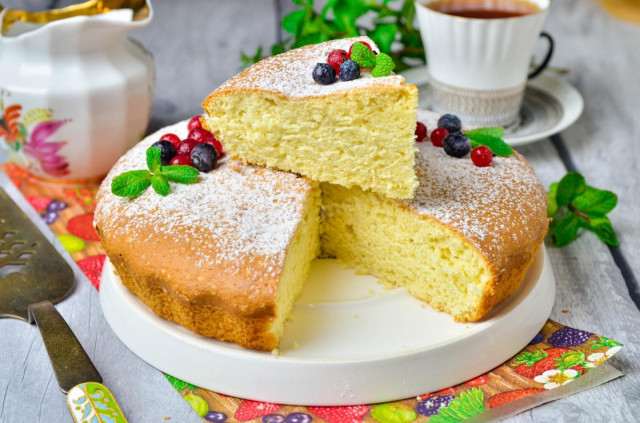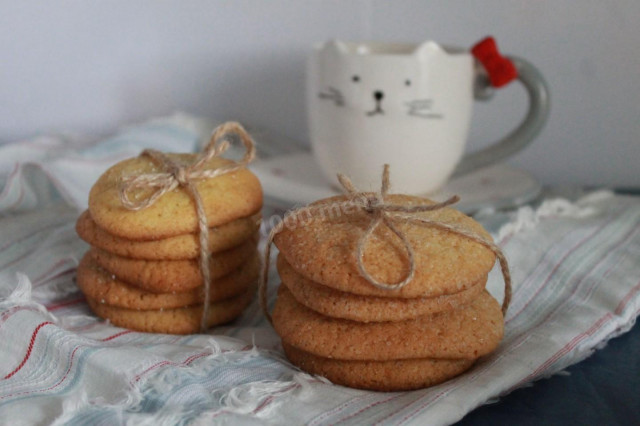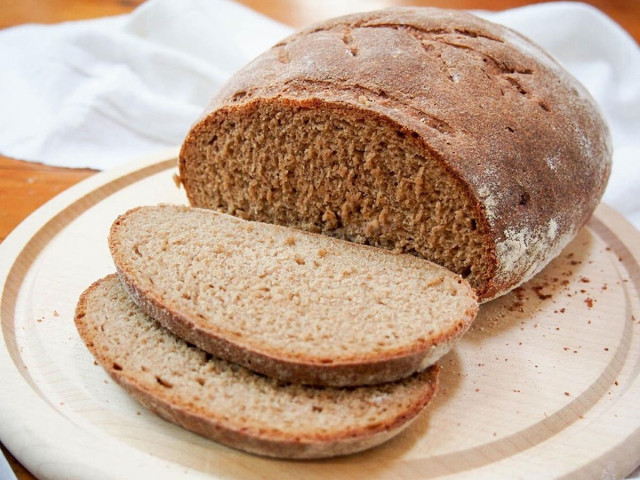Composition / ingredients
Step-by-step cooking
Step 1:

How to make a sponge cake on boiling water? Prepare the necessary ingredients. Take large, selected and fresh eggs. If the eggs are small, take 1 more. Eggs should be at room temperature, so take them out of the refrigerator in advance. Vanillin can be replaced with 1 tsp vanilla sugar and pour it together with ordinary sugar into eggs (step 1). Take the flour of the highest grade with a protein content of no more than 10.3 g .
Step 2:
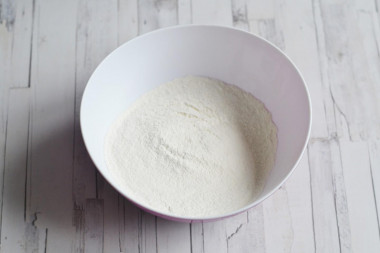
Sift the flour with baking powder and vanilla into a separate bowl. It is important to sift the flour to saturate it with oxygen. Then the baking will turn out to be airy and will rise well when baking.
Step 3:

In a bowl, break the eggs at room temperature. Start whipping with a mixer at low speed, gradually increasing the speed to maximum. Pour in all the sugar in parts. Beat until a fluffy, stable foam and lightening of the mass. The mixture should increase 3-4 times. But it is important not to overdo the eggs: the mass should be lush and with lots of small air bubbles. If you whisk for too long, to a density, then your cake will not rise when baking.
Step 4:
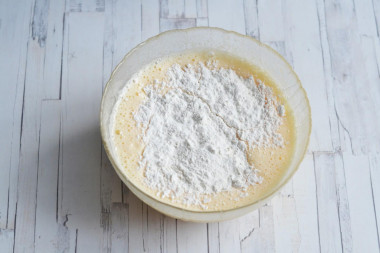
Add the flour mixture to the beaten eggs in 2-3 steps, gently stirring the mass with a silicone spatula from top to bottom, trying not to let the dough settle and breaking all the flour lumps. I prefer to mix the dough with a mixer at the lowest speed. Only you need to mix it for a short time, so as not to overdo the eggs. In addition, after mixing with a spatula, small flour lumps may remain in the dough, which are easily overlooked.
Step 5:
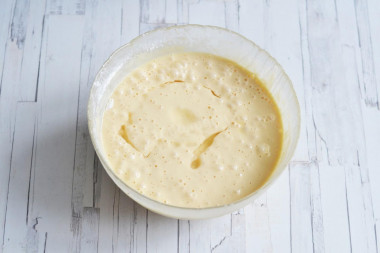
Pour odorless vegetable oil and boiling water into the dough.
Step 6:
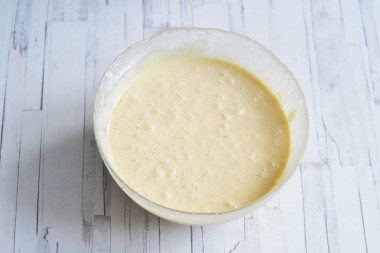
Mix the dough quickly and thoroughly, reaching to the bottom, because all the liquid flows quickly to the bottom of the bowl. As a result of mixing, the mass should not lose its splendor, but acquire elasticity and retain small bubbles on the surface.
Step 7:
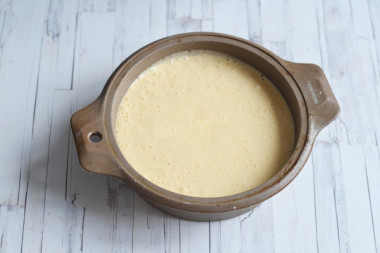
Cover the bottom of the baking dish with a diameter of 20 cm with parchment and grease it with butter. Pour the dough into the mold. Bake the sponge cake in preheated to 170°With the oven for about 40 minutes (determine the time by your oven). In any case, do not open the door for the first 30 minutes, otherwise the biscuit will settle immediately.*
Step 8:
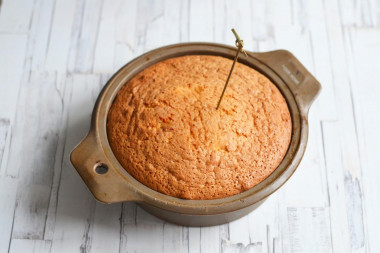
Check the readiness of the biscuit during baking with a skewer – it should come out dry. But start checking only towards the end of baking. And if crumbs stick to the skewer, it means that the cake is not baked inside. If you see that the top is already browned and the dough is not ready yet, cover the mold with a double sheet of foil. You can leave the finished biscuit in the cooling oven for 10 minutes.
Step 9:

To prevent the biscuit from falling off, turn it over on the grill and cool it to room temperature.
Step 10:
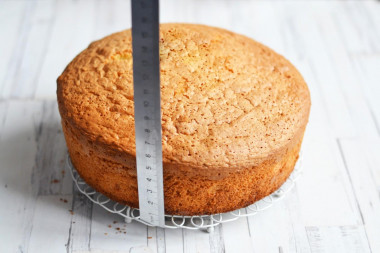
Depending on the size of the mold, the biscuit will vary in thickness. In the form of 20 cm , it turns out to be 6-7 cm thick . This is the standard thickness of a sponge cake for a cake of 3 cakes. As it cools down, it can settle quite a bit, but evenly, over the entire surface. This is normal if the biscuit does not fall in the center. The section shows that the dough is baked evenly.
* The dough should rise evenly over the entire area. If a high hillock forms on the surface, then you need to lower the temperature a little, if, on the contrary, the biscuit falls in the center, then the temperature needs to be increased. And it is better not to go far from the oven in order to correct its work in time.
Keep in mind that everyone's ovens are different. The temperature and cooking time may differ from those specified in the recipe. To make any baked dish successful, use useful information about the features of ovens !
In order for the oven to have time to heat up to the desired temperature, turn it on in advance (10-20 minutes before cooking).
Be prepared for the fact that you may need more or less flour than indicated in the recipe. Focus not on the amount of flour, but on the desired consistency of the dough. To avoid mistakes, read about flour and its properties!
Caloric content of products possible in the composition of the dish
- Chicken egg - 157 kcal/100g
- Egg white - 45 kcal/100g
- Egg powder - 542 kcal/100g
- Egg yolk - 352 kcal/100g
- Ostrich egg - 118 kcal/100g
- Whole durum wheat flour fortified - 333 kcal/100g
- Whole durum wheat flour, universal - 364 kcal/100g
- Flour krupchatka - 348 kcal/100g
- Flour - 325 kcal/100g
- Granulated sugar - 398 kcal/100g
- Sugar - 398 kcal/100g
- Vegetable oil - 873 kcal/100g
- Water - 0 kcal/100g
- Vanillin - 288 kcal/100g
- Baking powder - 79 kcal/100g

